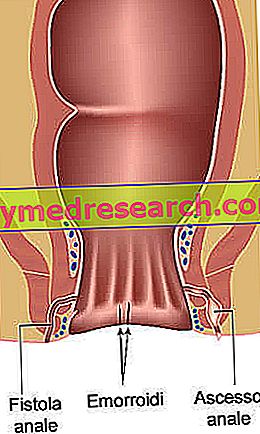Generality
Pheasant is the common name attributed to various species of birds belonging to the Phasianidae family (order of the Galliformes ); in particular, the "common Italian" pheasant belongs to the genus Phasianus, species P. colchicus .

If it were not for the plumage, the pheasant would very much remember a chicken. Unlike the latter, it has a slightly tapered body, while the proportions of the head and neck remain the same. The tail, which in the courtyard animal is short, is very long in the pheasant. The beak seems slightly more curved and the legs do not present substantial differences. The male pheasant, compared to the female, is distinguished by the presence of: a tarsic spur, glabrous and red cheeks, a more showy plumage with a black head and, at times, a white collar.
The pheasant lives comfortably both in the mountains and in the hills, but mainly in the plains; likes to graze on uncovered land, meadows and cultivated plots. It is not a great flyer and it takes refuge mainly in the little schools, among the grassy - shrubby vegetation or on the lower branches of the trees, which it reaches lazily with short flourishes. It rarely goes into the thickest bush. The feeding of the pheasant is similar to that of the chicken but less carnivorous (grains, worms, insects etc.). Among the natural predators of the pheasant, foxes and birds of prey are mainly distinguished.
Pheasant meat
Pheasant is considered a constituent of wild game (also known as "black meat"). In the kitchen, he prefers long cooking preceded by a fairly laborious preparation. The male pheasant has a stronger flavor and a more stringy consistency that worsens with aging; the female pheasant instead (known as pheasant) has a more delicate taste and lends itself more to the mixture with other meats. Pheasant meat must be accompanied by a medium-bodied red wine.
The male pheasant is ideal for the preparation of stews, braised meats or similar preparations, to be consumed as a dish or as an accompaniment to first courses such as polenta or egg tagliatelle (game ragù). The female pheasant, in addition to brilliantly replacing the poultry in roasts, properly cooked and pulped, becomes an exceptional ingredient for the "beaten" of stuffed pasta, such as tortelli, triangles and ravioli.
| Pheasant nutritional composition - Reference values of the INRAN Food Composition Tables | ||||||||||||||||||||||||||||||||||||||||||||||||||||||||||||||||||||||||
 | ||||||||||||||||||||||||||||||||||||||||||||||||||||||||||||||||||||||||
Nutritional values (per 100 g of edible portion) | ||||||||||||||||||||||||||||||||||||||||||||||||||||||||||||||||||||||||
| ||||||||||||||||||||||||||||||||||||||||||||||||||||||||||||||||||||||||
Pheasant meat fits perfectly with forest foods (mushrooms, dried fruit, berries, berries, chestnuts etc.) and with berries or aromatic herbs of all kinds (berries and bay leaves, sage, juniper berries, pepper black, cloves, rosemary, etc.). Tomato is always relevant but not essential, as are other meats (game: hare, roe deer, wild boar, deer etc. or preserved pork: sausage, bacon, lard, etc.).
The preparation of the pheasant before cooking is not an easy topic to deal with. First of all, it would be very important to know its origin; breeding pheasants have less intense but more tender and easy to cook meats; the same, as we have already said, applies to the female of the animal. In the event that a male pheasant should happen, old and wild (in my opinion) it is impossible to ignore the pre-treatment with maturing and marinating. First, the pheasant must be slaughtered (plucked, gutted), after which it would be ideal to place it hung by the neck in a cold and ventilated place or in the fridge. The time required for hanging varies according to the sex and size of the animal but, in principle, it would be counterproductive to extend it beyond 3-4 days; if combined with a marinade, the ideal formula could be: 2-3 days of maturation followed by a night of marinating. The marinating for the pheasant is subjectively composed. Essential ingredients are: extra virgin olive oil, celery, carrots, onion (or shallot), dressed garlic, peppercorns, red wine and white vinegar. As desired, you can choose from: bay leaves, juniper berries, cloves, thyme, cumin, rosemary, honey and balsamic vinegar.
Pheasant meat is lean (therefore suitable for a low calorie diet) and rich in high biological value proteins; the energy intake of the WHOLE animal is lower than that of chicken with skin.
The vitamins contained in it are the same as the other meats; there is no lack of most of the molecules belonging to the B complex and, above all, niacin (vit. PP) and cobalamin (vit. B12). In the absence of the necessary data, it is only conceivable that pheasant meat is rich in iron.
Pheasant meat is a purinophore food, therefore unsuitable for diet against hyperuricemia and gout.



